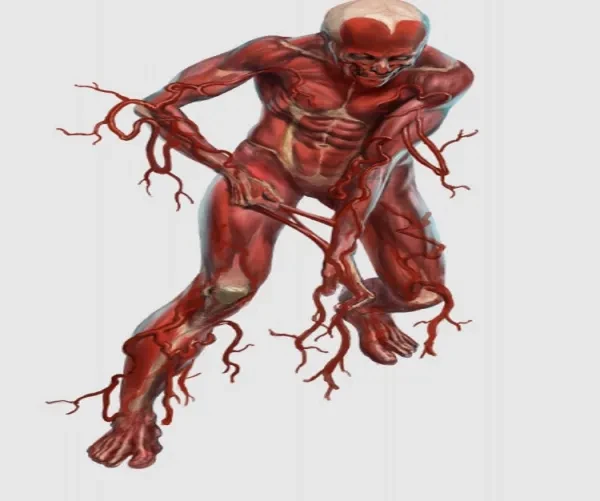
Everybody dies. But sometimes, through the application of dark magic or other strange happenings, the dead don’t get the memo that they’re supposed to stay dead. Usually, it falls on Pathfinders to send that message. More often than not, this message is communicated through gratuitous violence. Here are some undead your party of adventurers might have fun “communicating” with.
10. Skeletal Champion
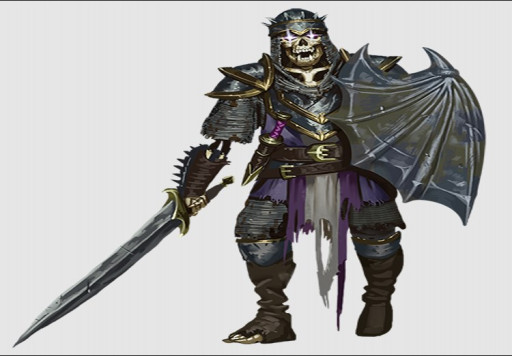
If you’re running an undead-based campaign, chances are your party will first deal with some easy skeletons or some goblins with an undead template. However, every party must face a first boss, A good first boss is the Skeletal Champion.
Unlike the typical skeleton, the champion is wearing armor. Meaning that the party will actually have to work to bring it down. And they can do more damage with their longsword than conventional skeletons can do with their claws.
What makes this monster impressive is its defense. An ACof 19 (or 21 with its shield raised). They have resistance to cold, electricity, and fire. They also have resistance to piercing and slashing. This monster is a good introduction to damage resistance mechanics.
Skeletal Champion Stats
- Level 2
- Perception +8; darkvision
- Languages Common, Necril
- Skills Acrobatics +8, Athletics +8, Intimidation +7
- Str +4, Dex +4, Con +1, Int -1, Wis +2, Cha +1
- Items chain mail, lance, longsword, steel shield (Hardness 5, HP 20, BT 10)
- AC 19 (21 with shield raised); Fort +7, Ref +10, Will +6
- HP 25 (negative healing); Immunities death effects, disease, paralyzed, poison, unconscious; Resistances cold 5, electricity 5, fire 5, piercing 5, slashing 5
- Attack of Opportunity
- Shield Block
- Speed 25 feet
- Melee longsword +10 [+5/+0] (versatile P), Damage 1d8+4 slashing
- Melee claw +10 [+6/+2] (agile), Damage 1d6+4 slashing
- Melee lance +10 [+5/+0] (deadly d8, jousting d6, reach 10 feet), Damage 1d8+4 piercing
9. Tar Zombie Mammoth
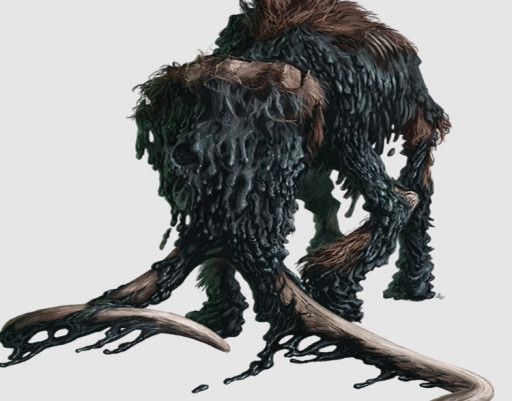
Tar Oozes have a diet that consists of anything that moves. Sometimes things that get left behind by that ooze rise again as tar-laden undead. Commonly, they’re just stronger versions of zombies. But now and then, a Tar Ooze eats a mammoth and they create a much more rare and more dangerous Tar Zombie Mammoth.
This giant rotting elephant has almost all the things you’d expect. It’s big. It can gore a player with its tusks. It can grab a player with its trunk and fling them at other players.
It can also vomit out tar and make them vulnerable to fire. However, it is worth noting that they also have a weakness to fire. The tar also makes everyone coated in it, including, the mammoths themselves, slower. This can be a handy monster to bring to a fight with a few fire-based creatures.
Tar Zombie Mammoth Stats
- Level 9
- Perception +18; darkvision
- Skills Athletics +20, Stealth +12 (+16 in tar pits)
- Str +7, Dex -1, Con +5, Int -5, Wis +1, Cha -3
- Slow A tar zombie is permanently slowed 1 and can't use reactions.
- AC 26; Fort +22, Ref +14, Will +16
- HP 240 (negative healing); Immunities death effects, disease, mental, paralyzed, poison, unconscious; Weaknesses fire 10, positive 10, slashing 10
- Flammable A tar zombie requires a successful DC 20 flat check to recover from persistent fire damage. This DC isn't reduced for assisted recovery.
- Speed 30 feet
- Melee tusk +21 [+16/+11] (reach 15 feet), Damage 2d12+11 piercing
- Melee trunk +21 [+16/+11] (reach 15 feet), Damage 2d8+11 bludgeoning plus Improved Grab
- Melee foot +21 [+16/+11] (reach 10 feet), Damage 2d6+11 bludgeoning
- Fling Requirements The tar zombie mammoth has a creature grabbed or restrained by its trunk; Effect The tar zombie mammoth whips its prey violently into the air. It attempts an Athletics check against the grabbed or restrained creature's Fortitude DC. If the creature is restrained, the mammoth gains a +4 circumstance bonus to this check. On a success, the mammoth flings the creature up to 30 feet overhead and up to 30 feet away (the creature takes damage from the fall as normal, up to 15 damage for a 30-foot fall). If the flung creature lands on another creature, the creature it lands on takes the same amount of bludgeoning damage (DC 28 basic Reflex save).
- Shambling Trample As Trample (Large or smaller, foot, DC 27), but the tar zombie mammoth Strides up to its Speed instead of double its Speed.
- Vomit Tar (evocation, primal) The tar zombie vomits a gout of sticky tar in a 15-foot cone that deals 7d6 bludgeoning damage (DC 28 basic Reflex save). Creatures that fail the save are slowed 1 and gain fire weakness 5. Both conditions end after 3 rounds or when the tar is scrubbed off (which requires 3 Interact actions). The tar zombie can't Vomit Tar again for 1d4 rounds.
8. Excorion
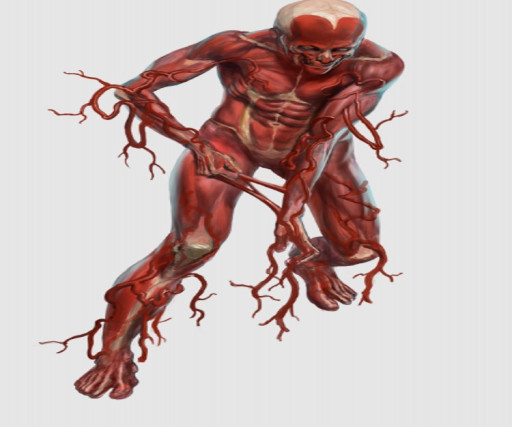
Cults dedicated to undeath aren’t known for their worker rights policies. If a person betrays or leaves the cult, there are no severance packages. They may get murdered, or worse, turned into an excorion
An excorion is an undead that has had its skin removed. It moves with its blood vessels. Its main special ability is the Bloody Handprint. It magically marks them for death and makes them a higher-priority target to other excorions in the area. This can be a good excuse for a GM to have monsters gang up on a player without breaking GM etiquette.
If Excorions are in a party with a living member, they can sacrifice themselves to boost the living member’s HP. This is only possible when Excorions have reached 70 HP or lower. The target will only receive half the HP. This can create a challenging encounter It’s also worth noting that Excorions can be made from larger creatures but this stat line is for standard ones.
Excorion Stats
- Perception +18; darkvision
- Skills Acrobatics +16, Athletics +17, Stealth +16
- Str +4, Dex +5, Con +4, Int -3, Wis +1, Cha +0
- AC 24; Fort +17, Ref +18, Will +14
- HP 160 (negative healing); Immunities death effects, disease, mental, paralyzed, poison, unconscious; Weaknesses positive 10, slashing 5
- Vein Walker The excorion moves about by way of hundreds of pulsating blood vessels, which stretch from its body in dozens of tight, ropy bundles and anchor it to the ground. An excorion can't be Tripped, Shoved, or otherwise forcibly moved except by magic, and the excorion ignores difficult terrain (but not greater difficult terrain).
- Speed 35 feet
- Melee fist +18 [+14/+10] (agile, finesse), Damage 2d8+8 bludgeoning plus Grab
- Ranged bloody spew +18 [+13/+8] (range 20 feet), Damage 3d6+4 bludgeoning and dazzled for 1 round
- Bloody Handprint The excorion plants a magical handprint on the target, marking them as chosen for death. The excorion makes a fist Strike against an adjacent creature; this doesn't count toward the excorion's multiple attack penalty. On a hit, the attack does no damage, but the creature becomes observed to every excorion within 60 feet, even if an excorion's line of sight would be blocked by a wall or other obstacle. This effect lasts until the handprint is washed off, which requires water and spending 3 actions to fully clean off.
- Vital Transfusion Requirements The excorion has at least 70 Hit Points; Effect The excorion sacrifices itself and transfers its bloody, vital energy to a willing living creature within 30 feet. The excorion is immediately destroyed, and the targeted living creature heals a number of HP equal to half the excorion's remaining HP at the time that it used this ability. The living creature is slowed 1 during its next turn as its body adjusts to the newly transfused blood and vital energy; the living creature also counts as an excorion for 1 minute to see other excorions' Bloody Handprint marks.
- Vomit Blood The excorion spews necrotic blood all over a foe it has grabbed or restrained. The grabbed creature must succeed at a DC 25 Fortitude save or become sickened 2.
7. Cairn Wight

Wights are another form of undead scourge on the world. The wights are created to protect tombs and other vaults created to guard treasure. However, cairn wights have gone off-script. And they’re just as likely to kill bystanders as they are graverobbers.
The worst part is that a Cairn Wight can make more Cairn Wights. Anyone they kill will also turn into a Cairn Wight. That said, the spawn won’t get their Drain Life attack bonus until their original creator is killed.
There are a few ways to make this fight interesting. Have cairn wights attack in town and attack random bystanders. Give them different weapons. You may even try to have them turn a player into a wight.
Cairn Wight Stats
- Perception +11; darkvision
- Languages Common, Necril
- Skills Athletics +12, Intimidation +11, Religion +9, Stealth +12
- Str +4, Dex +2, Con +4, Int +1, Wis +3, Cha +3
- Items longsword, studded leather armor
- AC 20; Fort +12, Ref +10, Will +11
- HP 67; Immunities death effects, disease, paralyzed, poison, unconscious
- Final Spite Trigger The cairn wight is reduced to 0 Hit Points; Effect The cairn wight makes a Strike before being destroyed. It doesn't gain any temporary HP from drain life on this Strike.
- Speed 25 feet
- Melee longsword +14 [+9/+4] (versatile P), Damage 1d8+7 slashing plus drain life
- Melee claw +14 [+10/+6] (agile), Damage 1d6+7 slashing plus drain life
- Cairn Wight Spawn (divine, necromancy) A living humanoid slain by a cairn wight's weapon or claw Strike rises as a spawned wight after 1d4 rounds. This spawned wight is under the command of the cairn wight that killed it. It doesn't have drain life or cairn wight spawn and is clumsy 2 for as long as it is a spawned wight. If its creator dies, the spawned wight becomes a full-fledged, autonomous cairn wight; it regains its free will, gains drain life and cairn wight spawn, and is no longer clumsy.
- Drain Life (divine, necromancy) When the cairn wight damages a living creature with a melee Strike, using an unarmed attack or its bound weapon, the cairn wight gains 5 temporary Hit Points and the creature must succeed at a DC 18 Fortitude save or become drained 1. Further damage dealt by the cairn wraith increases the drained condition value by 1 on a failed save, to a maximum of drained 4.
- Funereal Dirge (auditory, divine, emotion, fear, mental, necromancy) The cairn wight chants a low, haunting melody. Living creatures within 50 feet must attempt a DC 21 Will save. The cairn wight can't chant a new Funereal Dirge for 1d4 rounds.
- Critical Success The creature is unaffected.
- Success The creature is frightened 1.
- Failure The creature is frightened 2.
- Critical Failure The creature is frightened 2 and takes a –2 status penalty to saving throws against drain life.
6. Bloodshroud
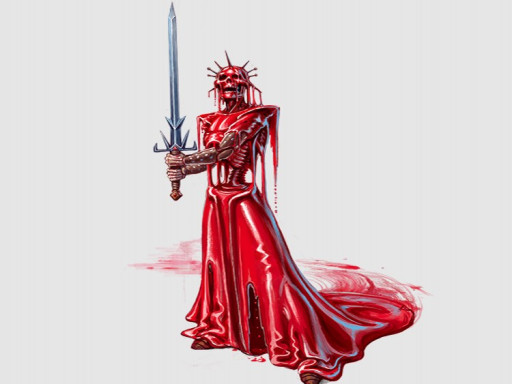
Cults sometimes have disagreements. When you’re a cult dedicated to necromancy and zombies, these disagreements sometimes take the form of creating new and exotic undead to kill each other with. One result is the Bloodshroud.
The bloodshroud is a magus that has a vampiric mist monster If someone attacks the bloodshroud with a melee attack, it drains their HP. The temporary HP stacks too. Meaning it might be good to handle bloodshrouds from range.
What makes them especially fearsome is that they’re maguses. They have spells that like phantasmal killer that can kill a player. Having multiple bloodshrouds on the field can be brutal.
Bloodshroud Stats
- Level 13
- Perception +23; darkvision, lifesense 60 feet
- Languages Abyssal, Celestial, Common, Draconic, Necril
- Skills Acrobatics +27, Arcana +27, Athletics +22, Occultism +27, Stealth +24
- Str +5, Dex +8, Con +2, Int +5, Wis +5, Cha +4
- Items +1 striking greatsword
- AC 33; Fort +20, Ref +26, Will +23
- HP 210 (negative healing); Immunities death effects, disease, paralyzed, poison, unconscious; Resistances cold 10, electricity 10, fire 10, piercing 10, slashing 10
- Sanguine Shroud (death, necromancy, occult) The bloodshroud is enveloped by a shroud of flowing blood. If a creature deals damage to a bloodshroud with a melee Strike or touches the bloodshroud, the creature must attempt a DC 30 Fortitude save. Any temporary Hit Points the bloodshroud gains from Sanguine Shroud fade after 1 hour.
- Critical Success As success, but the creature becomes temporarily immune to Sanguine Shroud for 24 hours.
- Success The creature is unaffected.
- Failure The creature becomes drained 1 and takes 2d6 persistent bleed damage. The bloodshroud gains 15 temporary Hit Points.
- Critical Failure As failure, but the creature becomes drained 2, and the bloodshroud gains 25 temporary Hit Points.
- Bloodshift (conjuration, necromancy, teleportation) Trigger A creature within 30 feet of the bloodshroud takes damage; Effect The bloodshroud transports itself and any items it's carrying to any unoccupied space adjacent to the triggering creature.
- Speed fly 30 feet
- Melee greatsword +26 [+21/+16] (magical, versatile P), Damage 3d10+15 slashing
- Melee claw +25 [+21/+17] (agile, finesse), Damage 3d8+14 slashing
- Arcane Innate Spells DC 33, attack +25; 8th polar ray (×3); 7th disintegrate; 6th acid arrow (×3), chromatic ray (×3), scorching ray (×3), shocking grasp (×3)
- Spellstrike Frequency until recharged; Effect The bloodshroud channels a spell that takes 1 or 2 actions to cast and requires a spell attack roll into a claw or greatsword Strike. The effects of the spell don't occur immediately but are imbued into the bloodshroud's attack instead. The bloodshroud makes a melee Strike with a weapon or claw. The spell is coupled with the bloodshroud's attack, using the attack roll result to determine the effects of both the Strike and the spell. This counts as two attacks for the purposes of determining the bloodshroud's multiple-attack penalty, but the penalty is not applied until after the Spellstrike. Using Bloodshift automatically recharges the bloodshroud's Spellstrike.
5. Graveknight
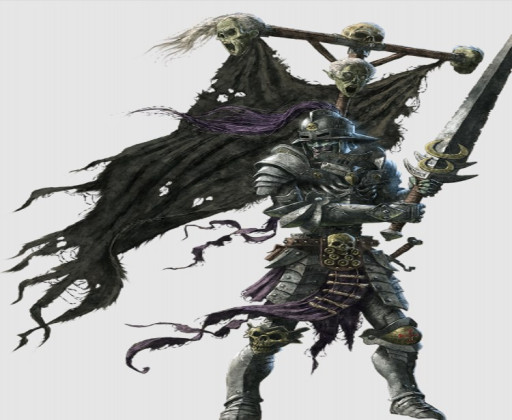
Graveknights are undead whose spirits fused with their armor. Often, they are on the frontlines of undead attacks on humans or other cultists. Graveknights can pose a challenge in numbers.
Much stronger than most physical attack-focused undead, the Graveknights use magical weapons that do additional damage depending on which elemental weapon they’re using. They can use acid, ice, fire, or electricity.
They can use any weapon and they have the critical specialization for any weapons they wield. A Gravknight can shoot a 30-foot con of energy and do a large amount of damage to anyone in the area. Its sacrilegious aura can also counter any positive energy spells cast within 30 feet of it. This will make healing harder.
Graveknight Stats:
- Level 10
- Perception +19; darkvision
- Languages Common, Necril
- Skills Athletics +23, Intimidation +22, Religion +19, Warfare Lore +20
- Str +7, Dex +4, Con +4, Int +2, Wis +3, Cha +5
- Items +1 resilient full plate, composite longbow (20 arrows), greatsword
- AC 31; Fort +21, Ref +19, Will +18
- HP 175 (negative healing, rejuvenation); Immunities cold, death, disease, paralyzed, poison, unconscious
- Sacrilegious Aura (abjuration, aura, divine, evil) 30 feet. When a creature in the aura uses a positive spell or ability, the graveknight automatically attempts to counteract it, with a +17 counteract modifier.
- Attack of Opportunity
- Speed 25 feet
- Melee frost greatsword +24 [+19/+14] (cold, magical, versatile P), Damage 2d12+10 slashing plus 1d6 cold
- Melee fist +23 [+19/+15] (agile, cold), Damage 2d6+10 bludgeoning plus 1d6 cold
- Ranged frost composite longbow +21 [+16/+11] (cold, deadly 1d10, magical, range increment 100 feet, reload 0, volley 30 feet), Damage 2d8+6 piercing plus 1d6 cold
- Devastating Blast (arcane, cold, evocation) The graveknight unleashes a 30-foot cone of energy. Creatures in the area take 6d12 cold damage (DC 29 basic Reflex save). The graveknight can use this ability once every 1d4 rounds.
- Graveknight's Curse This curse affects anyone who wears a graveknight’s armor for at least 1 hour. Saving Throw DC 33 Will save; Onset 1 hour; Stage 1 doomed 1 and cannot remove the armor (1 day); Stage 2 doomed 2, hampered 10, and cannot remove the armor (1 day); Stage 3 dies and transforms into the armor’s graveknight.
- Phantom Mount (arcane, conjuration) The graveknight summons a supernatural mount as per phantom steed, heightened to a level equal to half the graveknight's level. Unlike phantom steed, the steed's AC and saving throw bonuses are all 4 lower than the graveknight's, and the steed has one-third the graveknight's Hit Points (rounded down). If the steed is destroyed, the graveknight must wait 1 hour before using this ability again.
- HP 58; AC 27, Fort +17, Ref +15, Will +14.
- Weapon Master The graveknight has access to the critical specialization effects of any weapons it wields.
4. Graveknight Champion

As you can probably guess, graveknight champions are more powerful graveknights. These more powerful undead are created by the gods themselves. And the increase in power proves their origin.
Like their counterparts, these undead have access to any weapon with elemental magic. The weapons are more powerful. Graveknight Champions also can channel spells through their hands and weapons. This makes him a threat from both short and long-range.
Graveknight champions also have armor that can cling to anyone trying to escape the graveknight. It can grapple a player and prevent a retreat. Since the armor is doing the grappling, the graveknight will have both hands free.
Graveknight Champion Stats
- Level 15
- Perception +27; darkvision
- Languages Common, Necril
- Skills Athletics +31, Deity Lore +27, Intimidation +29, Religion +27
- Str +8, Dex +4, Con +5, Int +2, Wis +4, Cha +6
- Items +2 resilient full plate, greater flaming greatpick, greater flaming composite shortbow (20 arrows)
- AC 38; Fort +28, Ref +26, Will +25
- HP 275 (negative healing, rejuvenation); Immunities death, disease, fire, paralyzed, poison, unconscious
- Attack of Opportunity
- Clutching Armor (arcane, transmutation) Trigger A creature attempts to move away from the graveknight; Effect The graveknight's armor animates and attempts to Grab the triggering creature. It makes an Athletics check to Grapple using the graveknight's Athletics modifier – 2. The armor can continue to Grapple the creature normally. Since the armor is grappling the creature, the graveknight doesn't need a free hand to do so.
- Speed 25 feet
- Melee greatpick +31 [+26/+21] (fatal d12, fire, magical), Damage 3d10+16 slashing plus 1d6 fire
- Melee fist +30 [+26/+22] (agile, fire), Damage 3d6+16 bludgeoning plus 1d6 fire
- Ranged composite shortbow +28 [+23/+18] (deadly d10, fire, magical, range increment 60 feet, reload 0), Damage 3d6+10 piercing plus 1d6 fire
- Innate Divine Spells DC 33, attack +25; 7th eclipse burst, finger of death; 6th fireball, scorching ray; 5th cone of cold, flame strike; 4th fireball; Cantrips (7th) chill touch, daze, light, shield
- Channel Magic The graveknight redirects magical energies through its armor, allowing it to deliver magic through an attack. The graveknight Casts a Spell that takes 1 or 2 actions to cast and requires a spell attack roll. The effects of the spell don't occur immediately but are imbued into an attack instead. The graveknight then makes a melee Strike with a weapon or unarmed attack. The spell is coupled with the attack, using the attack roll result to determine the effects of both the Strike and the spell. This counts as two attacks for the graveknight's multiple attack penalty but doesn't apply the penalty until after it's completed Channeling Magic. The graveknight can't use Channel Magic again for 1d4 rounds.
- Devastating Blast (arcane, evocation, fire) The graveknight unleashes a 30-foot cone of fire. Creatures in the area take 8d12 fire damage(DC 36 basic Reflex save). The graveknight can use this ability once every 1d4 rounds.
- Graveknight's Curse (arcane, curse, necromancy) This curse affects anyone who wears a graveknight's armor for at least 1 hour. Saving Throw DC 24 Will save; Onset 1 hour; Stage 1 doomed 1 and cannot remove the armor (1 day); Stage 2 doomed 2, hampered 10, and cannot remove the armor (1 day); Stage 3 dies and transforms into the armor's graveknight.
- Weapon Master The graveknight has access to the critical specialization effects of any weapons it wields.
3. Queen Sluagh
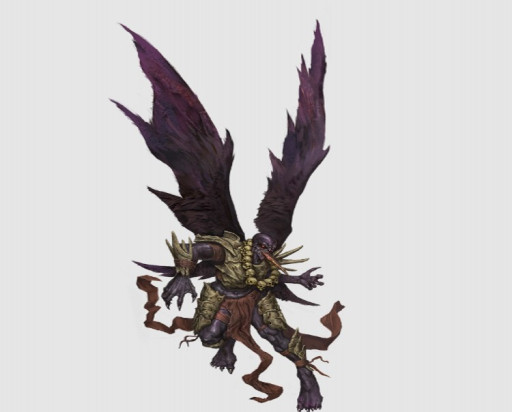
While many Fey are malicious, few are as malicious as the queen sluagh. Operating much like a hive, the sluagh reapers are sent out to bring food back for their queen. Unlike bees, they don’t feed on honey. They feed on souls.
Sluaghs go to the dying or recently dead and snatch their souls, bringing them back to their queen. Their queen can also snatch souls. It can do a lot of damag each turn.
To make things worse, it can summon sluagh reapers. They might not pose a challenge, but they can get in the way. A queen’s powerful magic allows it to cast overwhelming presence on the party. This can take them out of the fight if they critically fail.
Queen Sluagh Stats
- Level 18
- Perception +31; greater darkvision, soulscent (imprecise) 200 feet
- Languages Aklo, Common, Necril, Sylvan; voice of the soul
- Skills Acrobatics +29, Athletics +35, Deception +30, Intimidation +32, Stealth +29, Survival +31
- Str +9, Dex +5, Con +9, Int +7, Wis +7, Cha +4
- Soulscent (divination, occult) The sluagh is aware of all doomed creatures, dying creatures, and creatures that died within the last hour within the listed range.
- Voice of the Soul A sluagh queen knows any language of a creature whose soul they've devoured and can perfectly mimic its voice by attempting a Deception check to Lie, with a +4 circumstance bonus.
- AC 41; Fort +35, Ref +27, Will +33
- HP 417 (negative healing); Immunities death effects, disease, paralyzed, poison, sleep; Weaknesses cold iron 15, positive 10
- Frightful Presence (aura, emotion, fear, mental) 120 feet, DC 37.
- Speed 30 feet, fly 80 feet
- Melee proboscis +35 [+30/+25] (reach 20 feet), Damage 3d10+17 piercing plus Improved Grab
- Melee claw +35 [+31/+27] (agile, magical), Damage 3d10+17 slashing
- Ranged negative ray +31 [+26/+21] (magical, negative, range 100 feet), Damage 7d8 negative
- Primal Innate Spells DC 41; 9th overwhelming presence; 7th visions of danger (a swarm of sluagh reapers); 2nd invisibility (at will); Cantrips (9th) ghost sound
- Call of the Damned (auditory) The queen sends out shriek to all sluagh within 1 mile, summoning them to her. This typically calls 2d4 sluagh reapers. If the queen is facing foes strong enough to threaten her, these are likely too weak to pose a threat but can assist by fetching items or getting in enemies' way.
- Eat Soul (necromancy, occult) The queen touches a dying creature or a creature that died within the past 1 hour with her proboscis. If the target is dying, it must attempt a DC 41 Fortitude save; on a failure, its dying value increases by 2 (3 on a critical failure). If the target is dead, the queen devours the soul. Unless the queen is destroyed, the target can't be returned to life through any means, even powerful magic such as wish.
- Ghostly Swoop The queen sluagh becomes incorporeal until the start of their next turn, and Flies up to their fly Speed. While incorporeal, they are immune to precision damage, and have resistance 10 to all damage (except force, ghost touch, or positive); this resistance is doubled against non-magical damage. After using Ghostly Swoop, the queen sluagh can't use it again for 1d4 rounds.
- Soul Theft (occult, necromancy, negative) Requirements The queen has a creature grabbed or restrained with her proboscis; Effect The queen devours a portion of the creature's soul and steals some of its ability. The creature takes 5d8 negative damage (DC 41 Fortitude save). The queen gains temporary HP equal to the total amount of HP the target loses, including any HP lost from being drained.
- Critical Success The creature is unaffected.
- Success The creature takes half damage and is drained 1.
- Failure The creature takes full damage and is drained 1 and doomed 1. The queen steals a spell slot or training. If she steals a spell from a prepared caster, she transfers the spell to herself; if she steals from a spontaneous caster, she gains a prepared spell of the appropriate level and expends one of the creature's spell slots of that level. If she steals training, she chooses Perception, attack modifier, or any skill. For 24 hours, she gains a +2 status bonus to that statistic and the creature takes a –2 status penalty. The queen can have any number of stolen abilities, but only one from each creature.
- Critical Failure As failure, but double damage.
2. Grappling Spirit
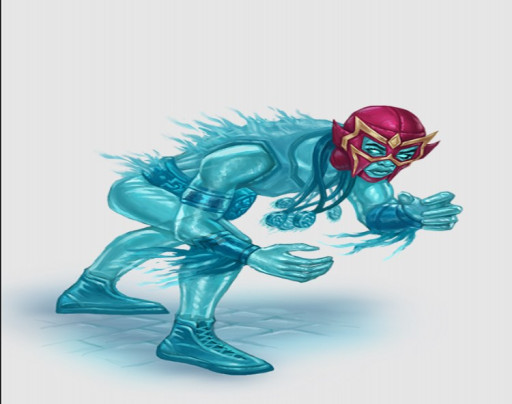
If you’ve ever wanted to combine your love of creating undead encounters in Pathfinder with your love of professional wrestling (particularly of the luchador variety), there is shockingly a monster here for you. The grappling spirit is essentially an undead professional wrestler. It’s not even evil. It just wants a last honorable fight.
It has all the traditional wrestling moves. It grapples, it punches. It does clotheslines via teleportation. Okay, so admittedly that last part isn’t traditional. It also has incorporeal traits so it’s harder to kill. And if someone attempts the sin of removing the wrestler’s mask, they’ll end up regretting it.
This fight is interesting not just for the wrestling moves but for the potential hilarity involved. By level 9, the party has been in a lot of serious situations. This encounter adds a brief moment of levity after multiple sessions of political intrigue and grim encounters. Encourage your players to appease the spirit by giving it a last bout. And don’t forget to bring your favorite wrestler impression.
Grappling Spirit Stats
- Level 9
- Perception +17; darkvision
- Languages Common
- Skills Acrobatics +19, Athletics +21, Diplomacy +18, Gladiatorial Lore +15, Intimidation +20, Performance +20
- Str -5, Dex +6, Con +4, Int +0, Wis +2, Cha +5
- AC 27; Fort +19, Ref +19, Will +15
- HP 125 (negative healing); Immunities death effects, disease, paralyzed, poison, precision, sleep; Resistances all damage 10 (except force, ghost touch, or positive; double resistance vs. non-magical)
- Warrior's Mask A grappling spirit wears a mask that allows them to abandon their original form and become a warrior focused solely on combat. This mask is quasi-corporeal, allowing it to be manipulated by both corporeal and incorporeal creatures. A creature who has the grappling spirit grabbed or restrained can remove the mask as an Interact action by succeeding at an Athletics check against the grappling spirit's Fortitude DC. Removing a grappling spirit's mask causes the spirit to fly into a frenzy. The grappling spirit becomes quickened and can use their extra action to Fly, Grapple, or Strike. They also gain a +4 status bonus to damage rolls, and they take a –4 status penalty to AC and Reflex saving throws. If the mask is put back on, the grappling spirit ends their frenzy.
- Speed fly 60 feet
- Melee ghostly hand +21 [+17/+13] (agile, finesse, magical, nonlethal), Damage 2d10+12 negative plus Improved Grab
- Ghostly Grasp A grappling spirit can Grapple corporeal creatures despite being incorporeal. The grappling spirit uses their Athletics check to Grapple as normal but can't use Athletics for other actions that require corporeal contact, like Force Open or Trip.
- Submission Lock (nonlethal) Requirements The grappling spirit has a creature grabbed or restrained; Effect The spirit saps their opponent's strength with a supernatural grip. The grappling spirit attempts an Athletics check to Grapple a creature they have grabbed or restrained, also adding 4d10+12 negative damage, depending on the result.
- Critical Success The creature takes double damage. If it's already enfeebled, it falls unconscious. If not, it is enfeebled 2 until the end of its next turn and enfeebled 1 for 1 minute.
- Success The creature takes full damage and is enfeebled 1 until the end of its next turn.
- Teleporting Clothesline (conjuration, occult, teleportation) Requirements The grappling spirit has a creature grabbed or restrained; Effect The grappling spirit pushes the creature 15 feet in a straight line. The spirit immediately teleports 20 feet to intercept. They make a ghostly hand Strike against the creature. On a hit, the creature is knocked prone, and on a critical hit, it also takes an additional 2d6 bludgeoning damage as it's driven to the ground.
- Victory Celebration If a spirit knocks a creature unconscious, each creature within 60 feet that witnesses the victory is targeted with a DC 26 roaring applause spell. The spirit must spend all their actions until the end of the turn celebrating, and a new medal or belt appears on the spirit.
1, Ravener

When you want a final boss for your undead-focused campaign, you can’t go much bigger than a ravener. These undead dragons are some of the most powerful undead Pathfinder has to offer and a great final challenge for your party of zombie slayers.
This dragon, like living dragons, is a physical engine of destruction. Every part of its body is a weapon. And it still has the breath weapon it used in life. And it can steal souls.This will make it harder to resurrect dead characters.
It also has a strong defense. It has 500 HP but it also has a soul ward with 200 HP. If the party brings the Ravener down to 51 HP but doesn’t finish it off within a round, it will discorporate. Then it will reappear within a mile of the area in a few days.
Ravener Stats
- Level 21
- Perception +37; darkvision, scent (imprecise) 60 feet, smoke vision, soulsense 60 feet
- Languages Abyssal, Common, Draconic, Dwarven, Jotun, Necril, Orcish
- Skills Acrobatics +32, Arcana +37, Athletics +39, Deception +38, Diplomacy +38, Intimidation +40, Stealth +35
- Str +9, Dex +5, Con +9, Int +5, Wis +6, Cha +8
- Smoke Vision Smoke doesn't impair an ancient red ravener's vision; it ignores the concealed condition from smoke.
- AC 47; Fort +38, Ref +34, Will +37; +1 status to all saves vs. magic
- HP 500; Immunities death effects, disease, fire, paralyzed, poison, sleep; Weaknesses cold 20, good 20
- Cowering Fear (aura, emotion, fear, mental) 90 feet, DC 42.
- Dragon Heat (arcane, aura, evocation, fire) 10 feet, 4d6 fire damage (DC 41 basic Reflex save)
- Soul Ward 200 HP. An intangible field of necromantic energy protects a ravener from total destruction. A soul ward has 150 maximum Hit Points, or 200 if the ravener is level 21 or higher. Whenever a ravener would be reduced below 1 Hit Point, all damage in excess of what would reduce them to 1 Hit Point is instead dealt to their soul ward. If this damage reduces the soul ward to fewer than 0 Hit Points, the ravener is destroyed. A soul ward’s Hit Points can be restored only via specific ravener abilities such as Consume Soul, ravenous breath, or vicious criticals. A ravener who goes more than a week without successfully using Consume Soul to feed on a dying creature starves, and their soul ward loses 1d4 Hit Points each day until they feed. If the ravener’s soul ward loses all its Hit Points while the ravener still has more than 1 HP, they become a ravener husk.
- Attack of Opportunity Jaws only.
- Discorporate (divine, necromancy) Trigger The ravener takes excess damage to their soul ward but still has at least 51 Hit Points in their soul ward; Effect The ravener draws deeply into their soul ward, discorporating their body into soul energy to escape. They take 50 damage to their soul ward and their physical body vanishes, reappearing 1d4 hours later in a random location within 1 mile from the location where they used Discorporate.
- Redirect Fire (abjuration, arcane) Trigger A creature within 100 feet casts a fire spell, or a fire spell otherwise comes into effect from a source within 100 feet; Effect The ravener makes all the choices to determine the targets, destination, and other effects of the spell, as though they were the caster.
- Speed 60 feet, fly 180 feet
- Melee jaws +39 [+34/+29] (fire, magical, reach 20 feet), Damage 4d10+17 piercing plus 3d6 fire and 2d6 negative
- Melee claw +39 [+35/+31] (agile, magical, reach 15 feet), Damage 4d8+17 slashing plus 2d6 negative
- Melee tail +37 [+32/+27] (magical, reach 25 feet), Damage 4d10+15 slashing plus 2d6 negative
- Melee wing +37 [+33/+29] (agile, magical, reach 20 feet), Damage 3d8+15 slashing plus 2d6 negative
- Arcane Innate Spells DC 44; 8th wall of fire (at will); 4th suggestion (at will); Cantrips (9th) detect magic, read aura
- Consume Soul (death, divine, necromancy) Trigger A living creature within 30 feet of the ravener dies; Effect The ravener tears the creature’s soul from its body with their maw and gulps it down. The dying creature must attempt a DC 44 Fortitude save.
- Critical Success The creature is unaffected.
- Success The ravener tears off a small chunk of the creature’s soul. If the victim is restored to life, they are drained 1 in addition to any other side effects of returning to life. The ravener adds a number of Hit Points to their soul ward equal to half the creature’s level.
- Failure As success, but the creature’s soul is ravaged. The creature is drained 3 and the ravener adds a number of Hit Points to their soul ward equal to the creature’s level.
- Critical Failure As failure, but the ravener devours the entire soul. The victim can’t be restored to life as long as the ravener exists except via a 10th-level effect such as miracle or wish, and the ravener adds a number of Hit Points to their soul ward equal to twice the creature’s level.
- Manipulate Flames (arcane, concentrate, transmutation) The ravener attempts to take control of a magical fire or a fire spell within 100 feet. If it succeeds at a counteract check (counteract level 10, counteract modifier +34), the original caster loses control of the spell or magical fire, control is transferred to the ravener, and this action counts as the ravener having Sustained the Spell with the action (if applicable). The ravener can choose to end the spell instead of taking control, if they choose.
- Ravenous Breath Weapon (arcane, evocation, fire) The ravener breathes a blast of flame that deals 20d6 fire damage plus 4d6 persistent negative damage (DC 44 basic Reflex save). A creature that fails its save is also drained 1 (or drained 2 on a critical failure). If a creature is drained by the ravener's Ravenous Breath Weapon, the ravener's soul ward gains 5 HP. The ravener can't use Breath Weapon again for 1d4 rounds.
- Vicious Criticals The ravener treats an attack roll as a critical hit on a roll of 19 or 20, as long as the attack roll was a success. Additionally, whenever the ravener makes a critical hit with one of their Strikes, the target must succeed on a Fortitude save or gain the drained 1 condition. If the target already has a drained value of greater than 0, their drained value instead increases by 1, to a maximum of drained 4. Whenever the ravener applies drain to a creature in this way, their soul ward gains 5 Hit Points.
